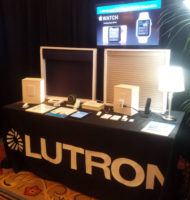In the North American region, the smart home market continues to disrupt major service providers and tech giants. If 2017 taught the industry anything, it was that having a smart home offering isn’t enough. Strategy, services and risk are essential to be successful in the smart home market.
For professional monitoring, connected security systems represented about 33 percent of residential intruder alarm monitoring market in the Americas region in 2017. By 2022, more than 55 percent of intruder alarm systems will be controllable through a mobile app. Moreover, MSOs are forecast to provide about 20 percent of professionally monitored security in the North American market by 2022. The market for do-it-yourself (DIY) installation with professional monitoring will double in size over the next five years.
The consumer market for smart home continues to see a back and forth between Amazon and Google, which now a collective share of about 25 percent of the consumer smart home market in the Americas region.
Smart home companies that have thrived over the past 24 months are companies that have invested heavily in interoperability, user-interface and consumer education. For interoperability, this now means more than just light bulbs working with door sensors. Interoperability means integrations between service offerings, such as with broadband (gateways/routers), video content and adjacent markets such as automotive. Interoperability means bringing consumers together under one umbrella – such as bridging neighborhood security with personal security, automotive security with home security and ecommerce/concierge services with voice control. User interface is how these services are presented to the consumer. Companies such as MONI have gone to extraordinary lengths to rebrand and alter exposure-levels to consumers. Best Buy is turning their business around and is becoming a force in the smart home market by partnering with companies such as Vivint and making it easier to buy products – all while offering senior care services and free consultations. All the while companies like AT&T are looking to shop Digital Life, Maplin in the UK is going into administration and O2 no longer offers smart home services. As such, consumer education is critical, just as it has been every year for the past decade. But for service providers, consumer education is more than explaining why a consumer needs a smart light bulb or a connected door lock. It is about educating on the services and use cases. With Comcast this means providing a router that has advanced parental control features, and on top of that, getting a router with smart home capabilities- all of which can be controlled through a voice remote. For security providers such as Vivint, this means bringing any camera brand under Streety for neighborhood security, providing the value add and becoming indispensable.
Although only about 22 percent of broadband households in the USA had at least one smart home device in 2017, competition is ramping up and the market is starting to show signs of consolidation. MSOs and DIY systems are already starting to take market share from traditional security providers. Although the Americas region is far from saturated, the changes coming to the security (intruder alarms) market will be different than in the past, making it very difficult to catch up once behind.



